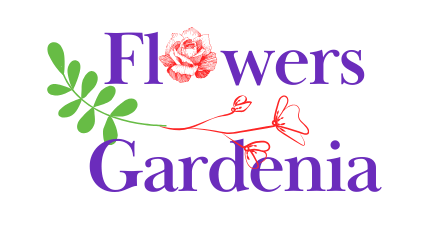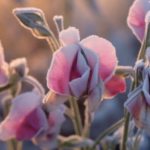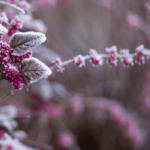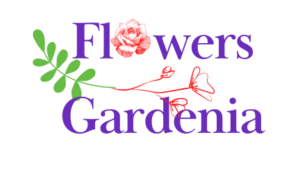
Beautiful flowers gardenia Plants For Your homes
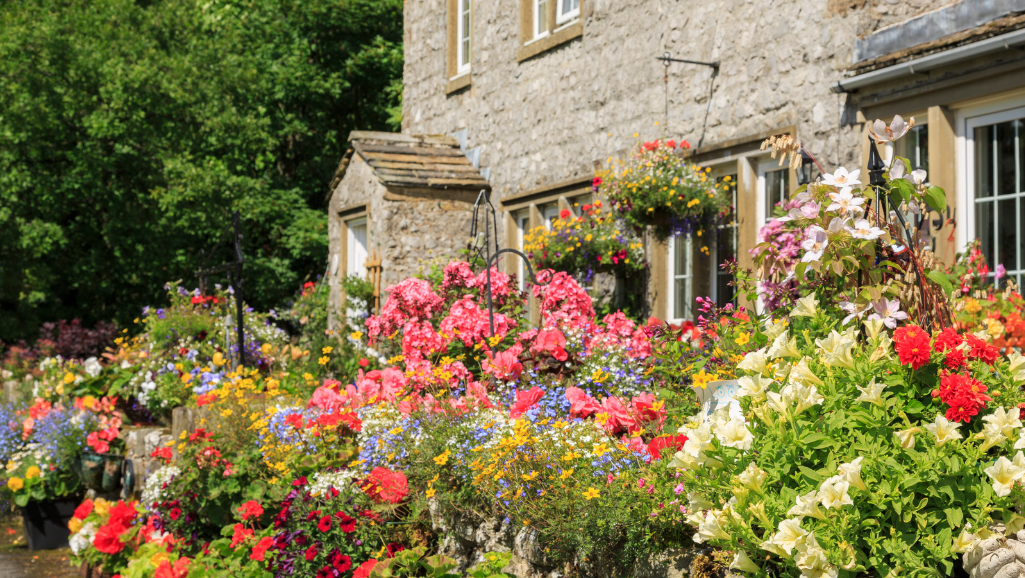
Turning a simple piece of land into a beautiful garden is a magical task. It brings you joy with its sights and smells every season. Cottage garden design shows off your style and creates a peaceful spot. It’s perfect for both experienced and new gardeners. This guide will help you make a garden full of life and beauty.
Using different plants, from tall hollyhocks to low lamb’s ear, is key to a charming garden design. Having plants that bloom at different times means your garden will always look great. Learn how to mix colors and plants to make your cottage garden stand out.
Adding plants like cherry tomatoes and basil makes your garden useful and pretty. Things like DIY bird baths add charm and tell the story of a cottage garden. With these tips, making your dream garden is within reach. Every visit will feel like a trip to a peaceful, blooming paradise.
Start a journey through the cottage garden style, where history and personal touch meet. The English cottage garden is known for its beauty and history. It shows how practicality and whimsy can come together in garden design. These gardens are full of lush, layered plants and invite nature into our homes.
Cottage gardens began in medieval England as places for both flowers and food for cottage dwellers. Over time, they grew from simple plots into beautiful gardens that show personal style. Today, gardeners are bringing back the beauty and function of historical gardens in their own yards.
An cottage garden landscaping is full of a mix of plants, from flowers to herbs. These gardens are wild and organic, with paths that wind through vibrant borders. They are full of life and beauty, loved by both people and wildlife.
| Plant Type | Examples | Benefits |
|---|---|---|
| Flowers | foxgloves, hollyhocks, delphiniums | Attracts pollinators, adds height and color |
| Herbs | lavender, thyme, mint | Culinary uses, aromatic qualities |
| Vines | clematis, roses, wisteria | Provides vertical interest, scents |
| Edibles | apple trees, strawberry, rhubarb | Functional, offers fresh produce |
The cottage garden style is loved for its beauty and usefulness. It has changed over time but still holds a special place in gardening. It’s perfect for those who like a more relaxed and personal way of gardening.
Starting to plan your cottage garden means making a space that looks good and works well. It’s about mixing beauty with practicality. A cottage garden looks like it’s not planned but actually needs careful planning to look its best.
Creating a cottage garden is more than just picking plants. It’s about designing outdoor spaces that are easy to get around in and look great. Start by thinking about where you’ll put plants and paths. This helps you make sure the garden is both beautiful and easy to care for.
Here’s a simple way to plan your cottage garden layout:
Before you start, sketch out your ideas for your cottage garden layout. This lets you plan for the best sunlight and color combinations. Here’s a table with some plant suggestions that are both useful and pretty:
| Type of Plant | Examples | Purpose | Space Requirements |
|---|---|---|---|
| Flowering perennials | Irises, Coneflowers | Looks good, attracts bees | Grows over time |
| Culinary herbs | Rosemary, Thyme | For cooking, has health benefits | Small, can go in front |
| Annuuals | Sunflowers, Nasturtium | Changes with the seasons, edible flowers | Needs replanting every year |
| Climbing plants | Morning Glories, Roses | Adds height to the garden | Needs something to climb on |
Planning and designing your cottage garden well is key to making it beautiful and lasting. By using these tips, you can make a garden that’s both magical and well-organized.
Starting a cottage garden means picking plants for cottage gardens that bloom well and need little care. This guide helps you pick the best plants for cottage gardens. It also shows you how to use traditional cottage garden plants for that magical look.
The magic of a cottage garden comes from its mix of colors, textures, and smells. Classics like roses, peonies, and foxgloves are key. They bloom beautifully and grow well in many places. Hollyhocks and lavender add beauty and a lovely scent.
When picking best plants for cottage gardens, look for those that last long and stay colorful all year. Echinacea, bee balm, and phlox are great choices. Add plants like sage and sweet peas for greenery and scent. Plants that attract bees and butterflies are also good for your garden.
Adding things like boulders or rustic fences gives your garden structure all year. Organic mulches and smart watering systems keep your garden looking great with less work.
Choosing flowers for cottage gardens should think about looks and usefulness. Darrell Trout and Ed Gohlich say good soil, smart watering, and tough plants cut down on upkeep. This makes your garden a peaceful spot.
Here’s a list of flowers and plants you should consider for your cottage garden:
| Plant Type | Blooming Season | Special Attributes |
|---|---|---|
| Roses, Peonies, Foxgloves | Spring to Summer | Classic blooms, perennial favorites |
| Daffodils, Tulips, Primroses | Spring | Early bloomers, vibrant colors |
| Hydrangeas, Zinnias | Summer | Large and colorful flowers |
| Asters, Mums, Sedum | Fall | Late-season charms |
| Sweet Peas, Sage, Lavender | Spring to Summer | Fragrant, attracts pollinators |
With the right mix and smart care, your cottage garden will be charming and useful. It will be a beautiful and sustainable haven.
In the world of cottage garden flowers, color is key. It weaves a story that captures and enchants. By mixing charming flower beds with blooming flower beds all year, you create a lasting beauty. This guide will show you how to pick colors that work well together, making your garden a feast for the eyes.
Choosing the right plants is vital for color magic in gardens. Picking plants with colors that complement or contrast each other adds beauty and balance. For example, irises in purple and yellow, or pink phlox with yellow daylilies, add drama as they bloom.
But it’s not just the flowers that matter. Things like painted fences or ceramic pots add to the garden’s look. A tropical climate approach brings in warm-loving plants, adding exotic colors and textures.
| Plant Choice | Color Contribution | Seasonal Interest |
|---|---|---|
| Roses and Clematis | Deep pinks, vibrant purples | Spring to Fall |
| Heuchera | Varied shades from silver to deep burgundy | Year-round |
| Double-flowered Tulips | Dramatic bursts of color | Early Spring |
| Bright Annuals | Intense seasonal colors | Summer |
| Gold Foliage Plants | Sunshine yellow to bright gold | Especially effective on gloomy days |
To keep your cottage garden looking great, mix blooming plants with those that stay green all year. With careful planning and creativity, your garden will become a colorful, textured, and scented paradise. It will show off your style and welcome everyone with open arms.
Adding edibles to your garden makes it both pretty and useful. In cottage gardens, mixing plants that look good with those that are edible is popular. This way, you get to enjoy beautiful flowers and eat from your garden too.
Adding edibles to a cottage garden makes it more than just pretty. It also makes it useful. Herbs like sage and rosemary not only smell great but also attract bees. Using herbs in your flower arrangements adds to the garden’s charm and health benefits.
The goal is to mix flowers and edibles in a way that looks good together. This keeps the garden feeling natural and full of life.
Picking the right herbs and vegetables makes your garden more diverse and fun. Plants like artichokes add unique looks and blooms to your garden. They fit right in with the traditional flowers.
| Plant Type | Visual Appeal | Utility |
|---|---|---|
| Artichoke | Large, sculptural leaves with bold flowers | Edible and ornamental |
| Rosemary | Evergreen with delicate flowers | Attracts pollinators, culinary use |
| Sage | Lovely gray-green foliage with purple flowers | Medicinal, attracts bees, culinary herb |
| Chamomile | Dainty white flowers | Medicinal, tea ingredient |
To blend edibles well in your garden, plan carefully. Make sure each plant gets what it needs without ruining the garden’s look. Use natural paths and borders to make your garden more charming. This way, visitors can enjoy the taste and beauty of your garden.
Adding cottage garden paths to your outdoor space can make it feel like a peaceful retreat. Paths made of weathered bricks, flagstone, or pebbles add charm and guide you through a garden full of flowers and greenery. They match your home’s style and make visiting your garden a delightful journey.
Garden path ideas
in cottage gardens often lead to secret spots or bright, sunny areas. Each turn reveals something more beautiful. These paths are not just pretty; they help with garden care. They keep plants safe from being stepped on and help organize your garden.
| Path Material | Benefits | Suggested Plants |
|---|---|---|
| Gravel | Easy to lay, excellent drainage | Lavender, Rosemary, Thyme |
| Flagstone | Natural look, durability | Ferns, Hosta, Sweet Woodruff |
| Brick | Traditional aesthetic, strong | Climbing Roses, Clematis, Ivy |
Garden design delights come from the unique decor you add. Things like upcycled bird baths or fun statues bring life to your garden. They attract birds and make your garden a place to be. These touches add a personal and historical feel, making your garden special.
For engaging garden design, think about adding focal points along your paths. A pretty trellis with roses at the entrance or a vintage bench in the shade can make your garden walk magical.
Choosing decor and structures that match your garden’s unique style makes your outdoor space beautiful and useful. It shows off your personal touch and love for gardening. This creates a peaceful place that celebrates the beauty of cottage garden paths and decor.
The charm of cottage gardens comes from their wild beauty and deep character. They bring a special touch to any home. This style of garden is loved for its natural look, where plants and flowers seem to grow freely.
People often try to make their own cottage garden to capture that charming look. They want to create a space that’s full of life and beauty.
Defining cottage gardens means understanding their mix of plants. You’ll find flowers, herbs, and vegetables all growing together. This mix is inspired by the English countryside and appeals to those looking for quaint garden ideas.
The key to cottage gardens is mixing different plants for looks and use. You’ll see traditional plants like foxgloves and hollyhocks with vegetables and herbs. This mix makes the garden beautiful and useful, even in small spaces.
Every garden has its own story. Personal cottage garden experiences often include learning from mistakes and finding surprises. You might hear about someone using old boots as planters or broken pots for borders.
These stories show the creativity and love that go into these gardens. They are true garden enthusiast insights.
Creating these gardens takes work but is fun. A guide on cottage garden planning lists many plants you can use. You can pick plants like ‘Magic Daydream’ Abelia or ‘Crimson Queen’ Acer palmatum, depending on your budget and garden size.
In conclusion, making or improving a cottage garden is rewarding. It lets you use your own ideas and experiences. This process connects you with nature and creates a peaceful outdoor space that reflects the beauty of traditional cottage gardens.
For a thriving cottage garden, focus on key tasks that enhance beauty and sustainability. These gardens love their free-spirited look and need special care for soil, watering, and upkeep. This care ensures they bloom all season and stay easy to maintain.
Strong soil health is key for cottage gardens. Adding compost to your soil makes it richer and more fertile, helping plants grow strong. Compost also keeps soil moist, which is vital for a healthy garden.
For watering, being efficient is crucial. Using a drip irrigation system sends water right to the roots, cutting down on waste and preventing leaf diseases. Mulching is also important, keeping soil moist in summer and reducing watering needs.
Keeping your cottage garden beautiful all year requires regular maintenance. In spring, prune and clean up winter’s debris to prepare for summer. In autumn, cut back plants and divide perennials to keep them growing well.
Choosing native plants makes your garden low maintenance. These plants are made for your local climate and need less care. Using perennials and self-seeding plants means your garden stays beautiful with little work.
Follow these tips to make your cottage garden lush and magical. Your garden will show off timeless beauty and care for the environment.
In the world of English garden design, cottage garden structures and garden vintage decor boost both looks and plant growth. Arbors, trellises, and pergolas turn a simple garden into a beautiful cottage garden. These items help garden vintage decor grow, making it easier to use vintage garden ideas.
Rustic garden accents like old ladders or bamboo stakes bring fun and usefulness, making gardens beautiful and creative. Using old bathtubs or vintage picnic baskets as planters is a great way to add garden vintage decor without spending a lot, showing off the beauty of English garden design.
DIY projects like making mason jar lanterns for lighting mix function with rustic style, adding a soft glow for evening garden parties. The rise in Pinterest use for sharing vintage garden ideas shows more people want unique, nostalgic garden styles.
| Feature | Benefit | Decoration Tip |
|---|---|---|
| Picket Fences | Creates boundary and depth perception | Whitewash or leave natural for a vintage feel |
| Stone Patios | Natural element integration | Surround with aromatic herbs for a sensory experience |
| Water Features | Increase uniqueness | Place near seating areas for a relaxing ambiance |
| Garden Lanterns | Enhanced evening aesthetics | Use solar-powered mason jar lanterns for sustainability |
For vintage garden ideas on a budget, check out yard sales and flea markets for garden ornaments. Items like gazing balls, statues, or vintage tools add a touch of history, blending old and new usefully.
Using cottage garden structures with garden vintage decor and rustic garden accents shows a love for traditional gardens and personal creativity. This is the heart of English garden design.
The art of creating a cottage garden blends history with serenity, bringing enchantment to our world. These gardens started in the 14th century in rural England. They have grown into a symbol of romantic garden design.
Today, cottage gardens are more popular than ever, showing a move towards organic and wildlife-friendly gardens. They attract birds, insects, and small mammals, helping local ecosystems. These gardens also teach us about plants and sustainable gardening.
They offer versatility, fitting different climates and styles worldwide. From roses and lavender to rustic paths and vintage decor, this article has tips for your own garden. With regular care like watering and weeding, your garden will thrive.
Each gardener adds their own touch to cottage gardens. This creates a tradition of beauty, joy, and a peaceful place for everyone.
